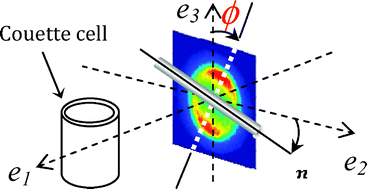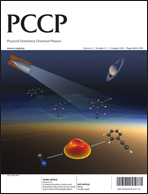Ordering fluctuations in a shear-banding wormlike micellar system
Abstract
We present a first investigation about the non-linear flow properties and transient orientational-order fluctuations observed in the shear-thinning lecithin–![[small gamma, Greek, dot above]](https://www.rsc.org/images/entities/i_char_e0a2.gif) , compared to most of the concentrated living
, compared to most of the concentrated living ![[small gamma, Greek, dot above]](https://www.rsc.org/images/entities/i_char_e0a2.gif) . A theoretical model was also developed to explain the oscillatory dynamics of the shear-induced nematic order parameter in terms of the presence of standing waves of the director orientation profile along the circumference of the Couette
. A theoretical model was also developed to explain the oscillatory dynamics of the shear-induced nematic order parameter in terms of the presence of standing waves of the director orientation profile along the circumference of the Couette


 Please wait while we load your content...
Please wait while we load your content...